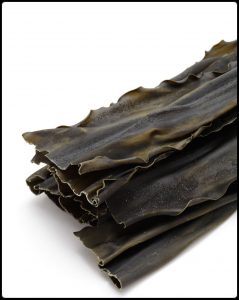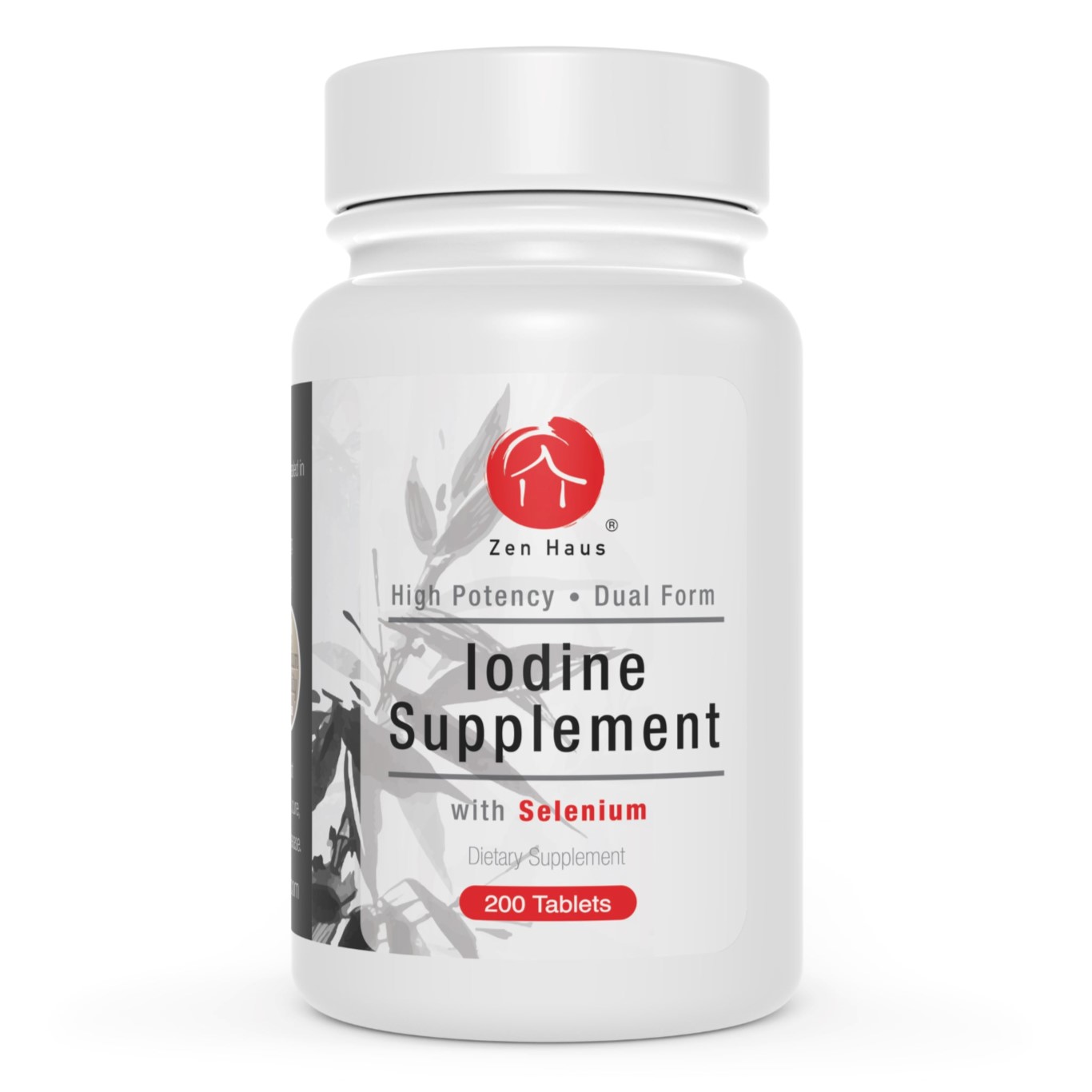Why KI?
Part III – Stomach and Prostate
In Part II we considered the evidence for which form of iodine the mammary glands prefer. In this section we will look at the stomach and the prostate, the other two parts of the body which it has been argued requires the molecular iodine (I2) form of iodine.
The Stomach
The Stomach Uses Iodine
Potassium iodide (KI) [or iodides (I-)] is a form of iodine that is not only readily absorbed the stomach but also concentrated there as well. Here, molecular iodine (I2) needs to first be reduced to iodide (I-) before absorption. The iodide concentrating mechanisms in the mucous membrane layer of the stomach have been known for some time.23 Iodide concentrating cells include gastric, small, and large intestinal mucosa.24,25 Ingested iodine in the form of water-soluble salts such as potassium iodide usually results in 100% absorption from the gastrointestinal tract. Molecular iodine is reduced to iodide in the gut and almost completely absorbed by the small intestine.26 How then can we suggest that the stomach prefers molecular iodine (I2)?
The stomach uses iodide in a way that protects cells. “The stomach, breast and thyroid share an important iodide-concentrating ability and an efficient peroxidase activity which transfers electrons from iodides to the oxygen of hydrogen peroxide and so protects the cells from damage caused by lipid peroxidation.”27 Supplementing with potassium iodide also has an antioxidant effect in the body.
We are talking about supplementing with iodine by ingesting iodide in order to make it available for the entire body. For this to happen the stomach has to be able to absorb iodide, which it does. It is the gateway for the iodine delivery system. We have established that most of the body uses iodide. How does the stomach prefer molecular iodine when it is the first step in the delivery of iodide to the rest of the body? Rather, it is the last stop for molecular iodine taken by ingestion.
Molecular Iodine (I2) In The Rat Stomach Lining
Once again we refer to the 2 week rat study.

This two week study stated the thyroid gland and skin tissue contained more iodine when given potassium iodide (KI) whereas the stomach lining contained more iodine when given molecular iodine (I2).28 This suggests that the rats were better at taking up the potassium iodide. Remember that preference is given to the thyroid over the rest of the body, as it is the primary user or point of concentration of iodine. There may be a complete hierarchy of iodine preference in the body. If so, and since we do not yet know this hierarchy, then it must first be established that the entire body’s iodine demands are completely satisfied. This will take longer than two weeks. Then we can consider the relative amounts of iodine taken up by different parts of the body. This point was never addressed. Also, if molecular iodine is being ingested and it remains in the stomach then perhaps some of it, that wasn’t converted to iodide, is not making its way throughout the body and being made available for the various tissues and cells. This would suggest partial failure in the process of iodine supplementation because the molecular iodine form was used.
Gaps in the Reasoning
It has been said that this study raised the question of whether or not different tissues in the body require different forms of iodine. While we maintain that different forms are not required, we believe questions of this nature are important and there is a need for more research. Advocates of the opposing view do not actually answered the question. Instead some have jumped to the conclusion that the body needs both. The popular response has been to keep repeating that the body needs both. It has become like a mantra in the iodine-taking community. Here the fifth point for considering evidence comes into play.
raising a question does not constitute an argument

It is questionable to go from finding high amounts of iodine in the stomach lining of rats to raising the question about the preference tissues. However, the real concern with this reasoning is the jump from raising a question to concluding that the stomach tissues, in rats, and by extension humans, needs molecular iodine. We do not see any evidence supporting this.
What if someone pointed to the fact that bromide competes with iodine in the body and binds to the same receptors? Would they then conclude that the body needs more bromine? Or that the body can use bromine as a replacement in the absence of iodine? Or that there is a preference for bromine?
Those who accept that the stomach needs molecular iodine will also be careful not to take Vitamin C with the iodine because it will be reduced to iodide. There is no evidence of the Japanese being careful to avoid taking any form of Vitamin C when they are also having seafood and sea vegetables. If so it would have been clearly referenced in books about iodine. We can assume the Japanese did not avoid taking Vitamin C along with their iodine rich diets. We see this practice as a recent innovation. We maintain that Vitamin C is important to take on a regular basis.
Stomach and Iodine Summary
The evidence shows that the stomach utilizes iodide (I-). It is well absorbed in the gastrointestinal tract and also has powerful antioxidant properties. The argument, and you would be generous to call it that, for the stomach having preference for molecular iodine (I2) is not a strong one. While in some minds it may raise a question on the form preferred, evidence and/or reasoning still needs to be provided to reach any conclusions.
The Prostate
The Prostate Uses Iodine
The prostate has sodium-iodide symporters (NIS) for the purpose of taking up potassium iodide (I-) into the cells. This indicates that the prostate uses iodide. No evidence or argument is given for the preference of molecular iodine (I2) by the prostate. The connection to the Japanese diet is made clear however when you consider that this diet contains high amounts of iodide, and not molecular iodine. It follows then that iodide is the preferred form. We explore this in more detail in the Iodine and Iodides in Seaweeds and Supplements post.

Kombu
The Japanese diet contains high amounts of iodide. It is ingested by from eating seaweed which mostly provides iodine in the form of iodide.29 Kombu, also called “The King Of Seaweed”, is known for being rich in minerals and holding high amounts of iodine. A study has shown that the body absorbs more iodine when supplemented with potassium iodide (KI) when compared to powdered kombu.30 This is more clear evidence that the body prefers iodide (I-) or potassium iodide (KI).
It is estimated that the Japanese diet has 25 times the amount of iodide than that of the United States. Japan also has much lower rates of prostate cancer. The same is true for other countries that consume higher amounts of iodide. The First National Health and Nutrition Examination Survey (NHANES I) showed that US men that consume more iodide benefit from it. It showed that there was a 29% lower risk of prostate cancer in those with the highest levels of iodine compared those with the lowest.31
Preventing Prostate Cancer with Potassium Iodide
Both normal and cancer cells depend on NIS for the uptake of iodide.32 In one study, NIS was found in 52% of prostate tumors and was associated with more aggressive tumors.33 It may be that not enough iodide was making it to the prostate. Perhaps the NIS was not functioning properly. Iodide is used by the prostate and positively affects its overall health.
Perchlorate, which includes chlorine, is a goitrogen that has become more common in the modern environment. Our water supply is sometimes contaminated with it and has also been making its way into crops and livestock. It can displace iodine binding in the body. It can also impair the NIS function throughout the body. This would severely limit the uptake of iodide in the prostate. Men diagnosed with prostate cancer should work on repairing the NIS34 by regularly taking high amounts of Vitamin C and incorporating natural salts, such as Himalayan Rock Salt, into their diet. Taking sufficient amounts of KI will help protect the body from the effects of perchlorate. With attention also given to NIS repair, the prostate should begin reverting back to its healthy state before it became iodine deficient.
Summary
The evidence shows that the prostate uses iodide (I-). As with the mammary glands, we must consider if the thyroid getting enough iodine and that there is enough available for the rest of the body. We must also ensure that the prostate NIS are functioning. Beyond these potential issues, potassium iodide (KI) will provide the prostate with the needed iodine.
The breasts, stomach and prostate all take up and use iodide or potassium iodide. There is strong evidence supporting this whereas the arguments and evidence presented for using Lugol’s form is weak. It is important to remember that the 12.5 mg estimate for daily maintenance amount of iodine was based on the consumption of seaweed in Japan. Seaweed contains mostly the iodide form of iodine.35 The 12.5 mg estimate was confirmed by testing the amount of iodide excreted in the urine at different dosage levels. It should be noted that we cannot test for molecular iodine (I2) levels in blood serum or urine. We only test for I- levels. These tests indicated that approximately 12.5 mg is the amount we should be taking for maintenance on a daily basis. Beyond that the iodine sufficient body begins to rapidly expel the excess iodide. Thus, we maintain that a safe maintenance amount of iodine is 12.5 mg and that it should taken orally in a primarily iodide form such as potassium iodide.
In this section we
- looked at the known benefits of potassium iodide (KI) in the stomach and prostate
- examined the argument for molecular iodine (I2) preference in the stomach and showed its weaknesses
- showed there is no argument given for molecular iodine (I2) preference in the prostate
In Part IV we will discuss why Lugol’s is also effective and why both forms are the right answer. We will then identify and discuss what some poor answers are to regarding iodine supplementation.
.


